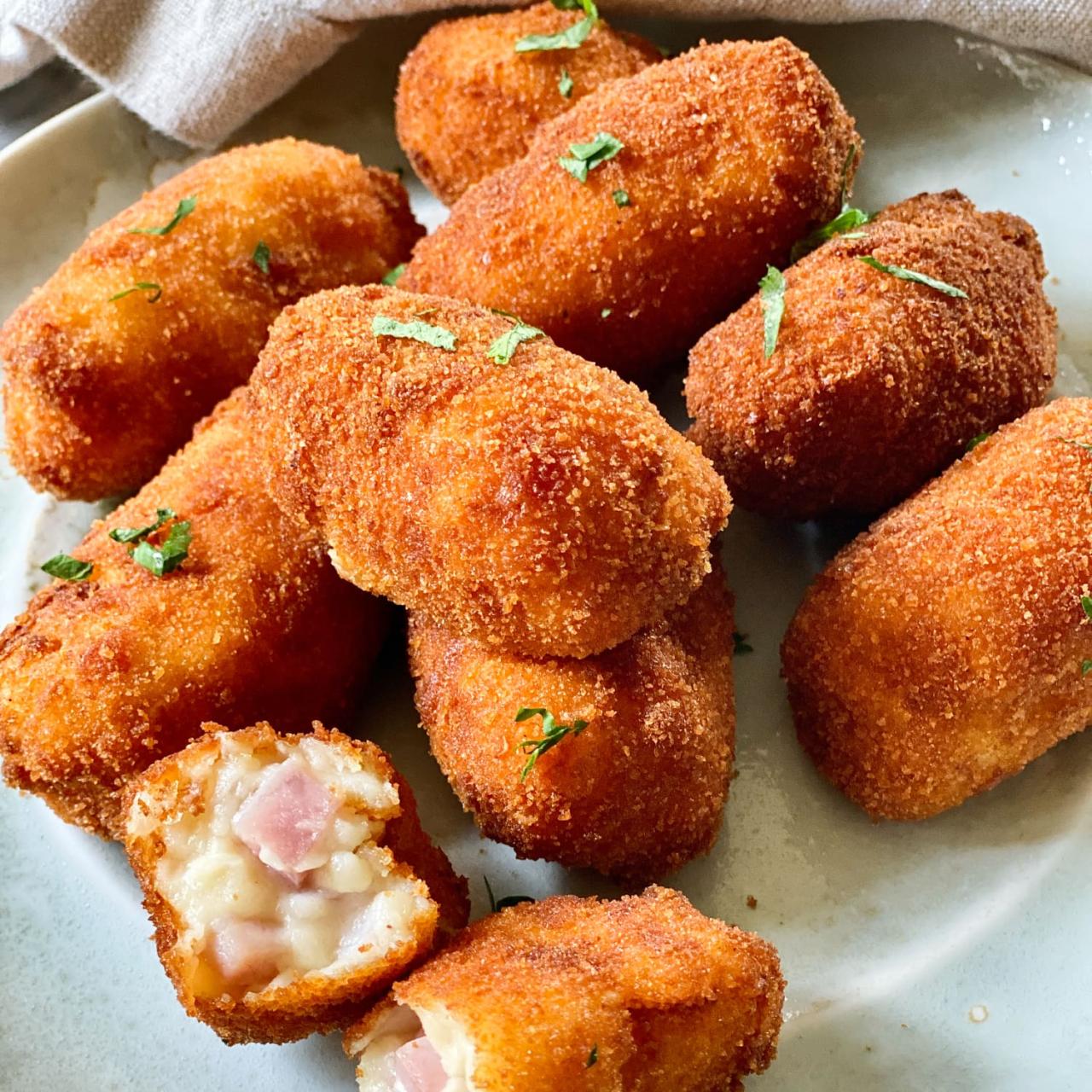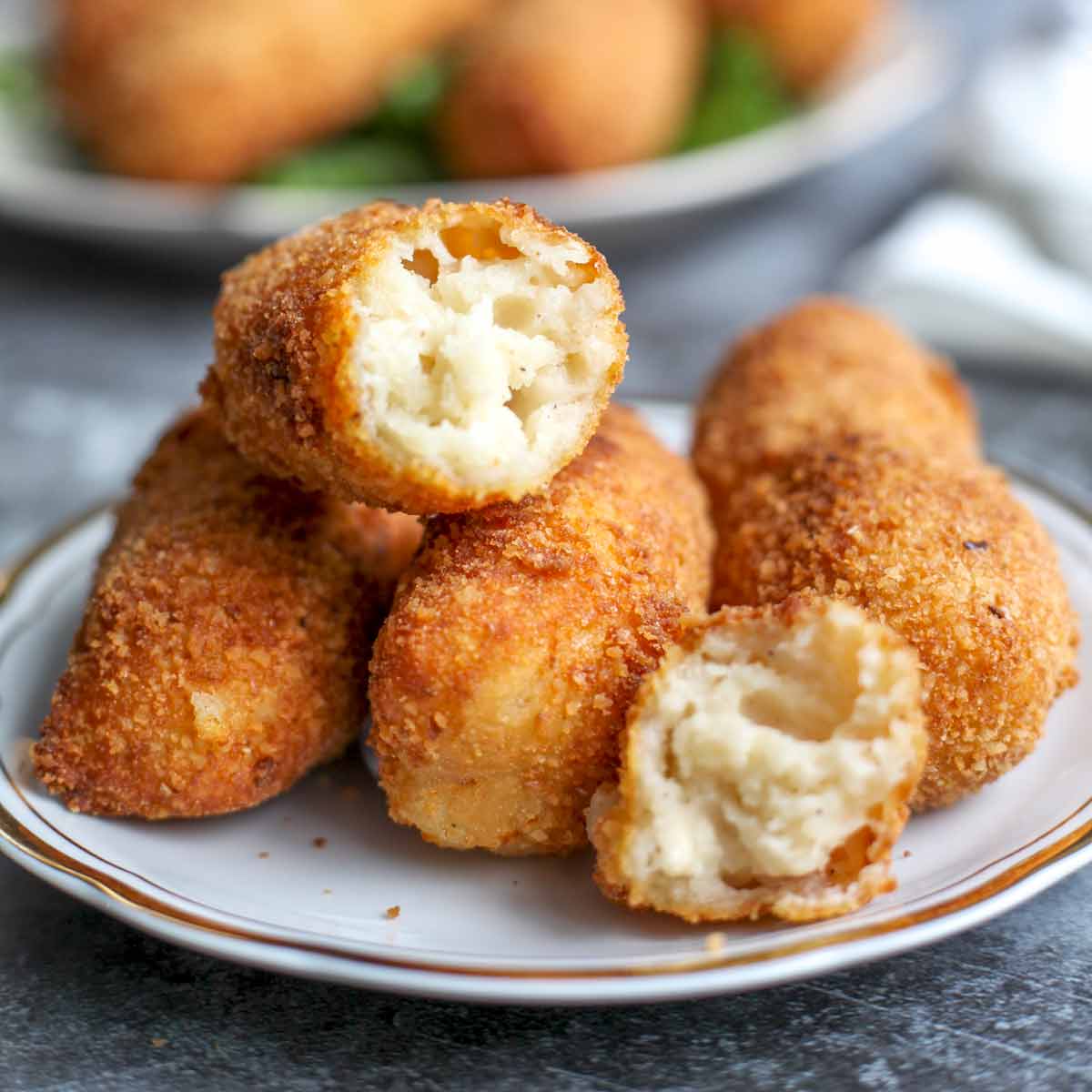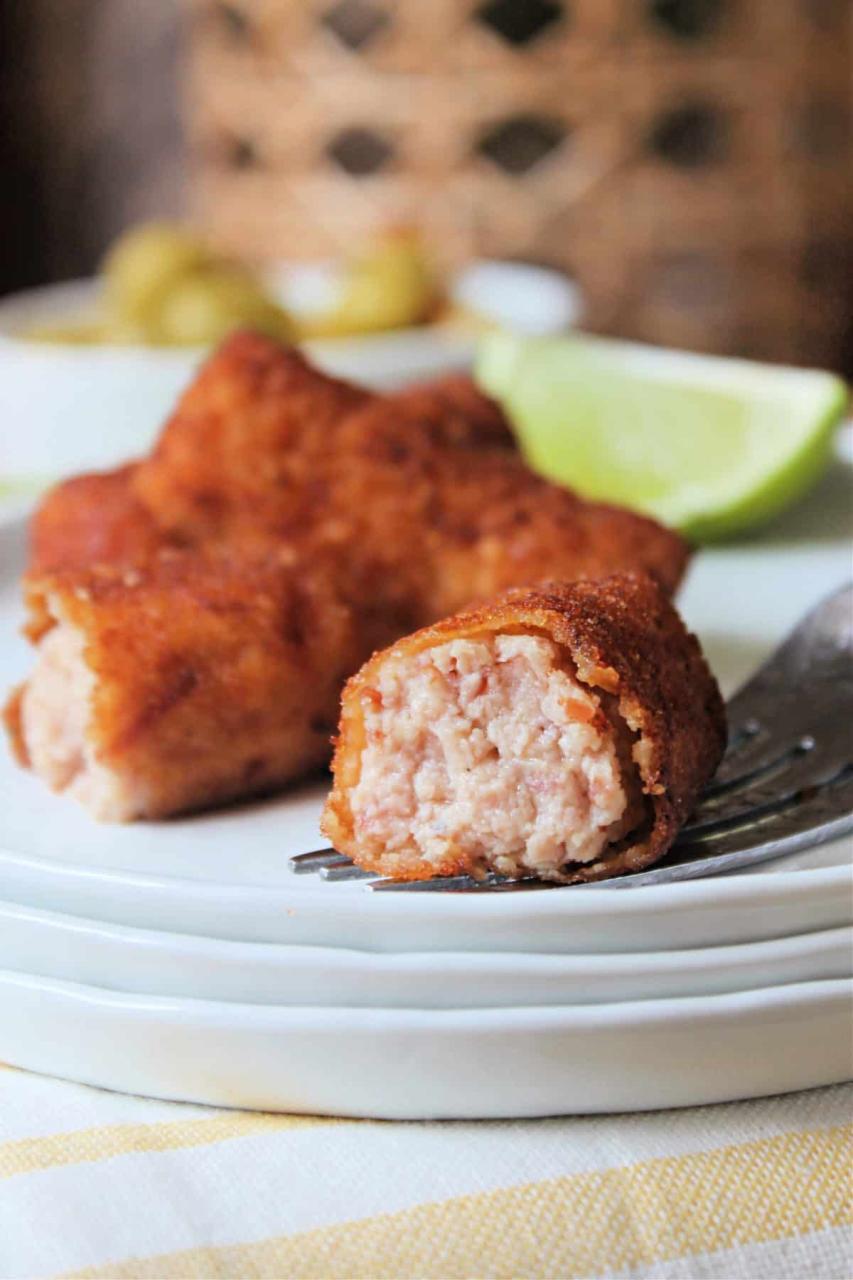On a quaint journey of culinary exploration through the heart of traditional Spanish taverns and bustling markets, I was delighted to discover the irresistible charm of Croquetas. This classic tapa, a staple in Spanish cuisine, captivated me with its crispy exterior and gooey center, exemplified by the rich blend of cheddar cheese, enveloped in a golden breadcrumb crust. The inclusion of eggs as a binding agent ensures that each croqueta maintains its perfect shape while frying, leading to a delightful contrast between the crunchy outside and the meltingly soft inside. Enthralled by this simple yet sophisticated dish and armed with the key ingredients of cheddar cheese, eggs, and breadcrumbs, I embarked on a quest to replicate the authentic taste and texture of the croquetas I had savored in Spain. Through dedication and culinary experimentation, I succeeded in creating a recipe that not only honored the traditional essence of the dish but also infused it with a touch of personal creativity. Eager to share this culinary gem, I now present to you my version of Croquetas, inviting you to indulge in the rich, comforting flavors of Spanish comfort food right at home.

Croquetas
Equipment
- 1 large pan
- 1 large mixing bowl
Ingredients
- 2 cups of vegetable oil
- 1/8 cup of water
- Salt and pepper
- 4 eggs
- 1 tablespoon of butter
- 1/2 cups of cheddar cheese
- 1/2 teaspoon of garlic powder
- 1 package Spanish ham
- 3 cups of bread crumbs
- 3 medium green onions
- 1/2 cup of onion
Instructions
- In a large pan over medium heat, melt the butter.
- Cook for approximately 10 minutes until the onion, bell peppers, and ginger are soft. Then add to a big mixing basin.
- In a large mixing bowl, combine the ham, parmesan cheese, and 1⁄2 cups bread crumbs.
- 3 eggs should be whisked together and then added to the ham mixture.
- Season to taste with salt and cayenne.
- In a large skillet, heat the vegetable oil over medium-high heat.
- 1 egg, beaten in a large mixing dish, plus water
- Roll the balls in bread crumbs after dipping them in the egg mixture.
- Place the balls in the heated oil, taking care not to crowd them.
Cooking tips about Croquetas

- Choose the Right Filling: Traditional Croquetas often feature ham (jamón), chicken, or fish as their star ingredient. However, the versatility of Croquetas means you can get creative. Regardless of your choice, ensure the filling is finely chopped or shredded, allowing it to blend well with the béchamel sauce.
- Smooth Béchamel is Key: The heart of a good Croqueta is in its béchamel sauce. It should be smooth, creamy, and thick enough to hold its shape when cooled. To avoid lumps, cook the flour fully and whisk steadily while slowly adding the milk. Letting the béchamel cool sufficiently is crucial before shaping your Croquetas.
- Consistent Shape and Size: For even cooking, it’s important to shape your Croquetas uniformly. Whether you’re aiming for traditional cylindrical shapes or prefer balls, keep them consistent. Using two spoons or a piping bag can help achieve uniform sizes and shapes.
- The Triple Coating Magic: For that signature crispy exterior, employ a triple coating process: first, roll your Croquetas in flour, then dip them into beaten eggs, and finally, coat them with breadcrumbs. For an extra crunch, use Panko breadcrumbs or give them a double coating of egg wash and breadcrumbs.
- Rest Before Frying: Once coated, letting your Croquetas rest in the refrigerator for at least an hour (or even freezing for a bit) can help set the shape and ensures they don’t fall apart when frying.
- Perfect Frying Temperature: Heat your oil to around 350°F – 375°F (about 175°C – 190°C). Frying at the right temperature is essential for achieving a golden, crispy exterior without absorbing too much oil. Fry in small batches to maintain the oil temperature.
- Drain Well: After frying, drain your Croquetas on a paper towel-lined plate to remove excess oil. This step helps keep them crisp and not greasy.
- Serving Them Right: Serve Croquetas hot and fresh out of the fryer for the best texture and flavor. They pair wonderfully with an array of sauces, from classic aioli to spicy tomato-based sauces.
Serving suggestions about Croquetas

- As Part of a Tapas Spread: Emulate the Spanish tradition and serve Croquetas as an integral part of a tapas spread. Pair them with other Spanish favorites such as jamón ibérico, cheese platters, olives, and a selection of cured meats to offer a diverse and engaging dining experience. This informal approach encourages guests to sample a little bit of everything, making for a relaxed and sociable meal.
- With Dipping Sauces: Enhance the flavor of Croquetas by offering a variety of dipping sauces. Classic options include alioli (a Spanish garlic mayonnaise), tomato salsa, or a spicy bravas sauce. Each sauce can create a different taste sensation and appeal to a wide range of palates.
- As a Starter Course: Serve Croquetas as an appetizing starter before the main course. Their rich, comforting taste makes them an excellent precursor to lighter main dishes, providing a lovely contrast in flavors and textures.
- With a Salad: Pair Croquetas with a fresh, crisp salad to balance their richness. A green salad dressed with vinaigrette, featuring ingredients like arugula, cherry tomatoes, and cucumbers, offers a refreshing counterpoint to the creamy and savory croquettes.
- As Part of a Family Meal: Croquetas can be served as a side dish alongside main entrees such as roasted chicken, grilled fish, or paella. They add a delightful crunch and a comforting element to family dinners, ensuring there’s something on the table for everyone to enjoy.
- With Wine Pairings: For an elevated dining experience, pair Croquetas with Spanish wines that complement their flavors. A crisp white wine, such as Albariño, can cut through the richness of the croquettes, while a light red wine like Tempranillo pairs well with meat-filled Croquetas.
- Casual Snacking: Croquetas are perfect for casual snacking, whether it’s during a game night, at a picnic, or simply as a treat. They’re easily portable and can be enjoyed by guests of all ages, making them a versatile choice for various occasions.
Top 5 FAQs about Croquetas

- What are Croquetas? Croquetas are a beloved Spanish delicacy, celebrated for their crispy breadcrumb exterior and creamy interior. This exquisite comfort food is known for encapsulating traditional Spanish flavors, with key ingredients including cheddar cheese, eggs, and breadcrumbs, which together create a dish that offers a divine contrast in textures – crunchy on the outside and delightfully gooey inside.
- What makes the perfect Croqueta filling? The ideal Croqueta filling can range from ham (jamón), chicken, fish, to even more creative fillings like cheddar cheese, all finely chopped or shredded to blend seamlessly with the béchamel sauce. This versatility allows for endless variations, each adding its unique flavor profile to the Croquetas.
- How can one achieve Croquetas with a crispy exterior? Achieving the perfect crispy exterior involves a triple-coating process: first, rolling the Croquetas in flour, then dipping them into beaten eggs, and finally coating them with breadcrumbs. For an exceptionally crunchy texture, Panko breadcrumbs can be used, or a double dipping in egg wash and breadcrumbs is recommended.
- What is the key to the creamy interior of Croquetas? The heart of Croquetas lies in the smooth, creamy béchamel sauce, which should be thick enough to hold its shape when cooled. Cooking the flour fully to avoid lumps and whisking steadily while slowly adding milk are crucial steps. Allowing the béchamel to cool properly before shaping ensures the filling remains tender and gooey once cooked.
- Any tips for frying Croquetas? For perfect frying, ensure the oil is heated to between 350°F – 375°F (about 175°C – 190°C). Frying at the right temperature is essential to achieve a golden, crispy exterior without the Croquetas absorbing too much oil. It’s also recommended to fry in small batches to maintain the oil temperature and to let the Croquetas rest in the refrigerator for at least an hour before frying to help set their shape.

Leave a Reply